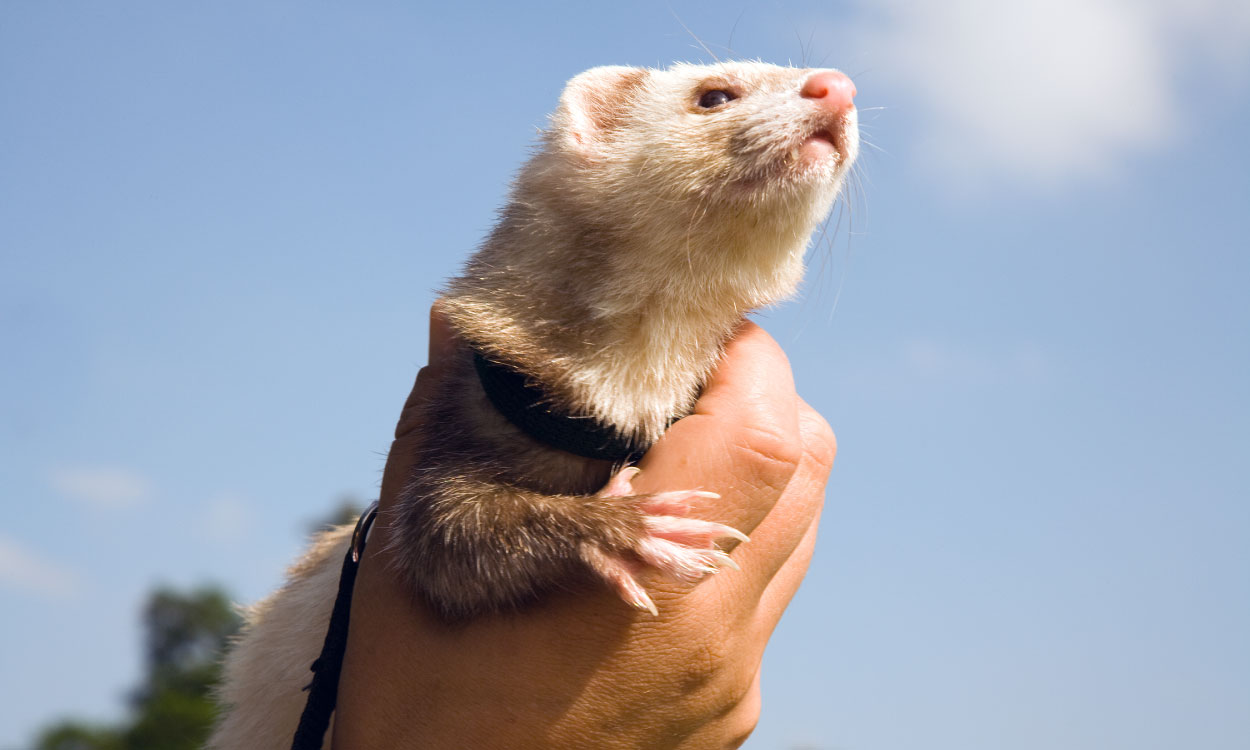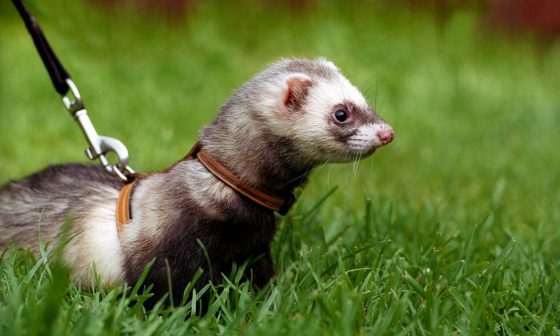Ferreting is one of the oldest and most fascinating partnerships between humans and animals. A traditional hunting activity, it involves using ferrets to flush rabbits out from their burrows and has been practised for centuries all over the world. In the past, it was a crucial way to control pests and source food, but today it is often used as a pastime or activity for people to enjoy. Often, it is passed down through generations of rural communities.
In this article, we’ll take a closer look at what ferreting is, how it works and when it may need to be used.
Read on for more information…

What is ferreting?
Ferreting is the practice of using trained ferrets to locate and drive rabbits out of their burrows, allowing hunters to then trap them in nets or by using dogs. The term ‘ferreting’ comes from the Latin word furonem, which means thief, and this is a reference to the way ferrets stealthily sneak into rabbit tunnels unseen.
The process typically works as follows:
- Locating rabbit warrens: The first step is to identify rabbit burrows, also known as warrens, where rabbits nest and live underground.
- Blocking exists: Hunters then place a net over all visible entrances to prevent rabbits from escaping once ferrets have been placed inside.
- Releasing the ferrets: A trained ferret is released into the warren. Agile and slender, the ferret will move rapidly through the tunnels. Once it finds a rabbit, it will chase them out of the hole and into the waiting nets.
- Retrieving the ferret: Once the work is done, the ferret will be called back or retrieved. They usually wear a small locator collar, which helps people track their position underground and retrieve them safely.
Ferreting relies on the ferret’s natural hunting instincts and curiosity, but it is not intended to harm the ferret or rabbit unnecessarily. A responsible ferret owner will keep their animals healthy and well-trained, making sure they’re properly cared for before and after every outing.
History of ferreting
The history of ferreting is fascinating and stretches back thousands of years. One of the earliest examples of animal-assisted hunting, let’s take a closer look at its history:
Ancient origins
Ferreting is believed to have originated in North Africa or the Mediterranean, where ferrets started being domesticated. Ancient Egyptians used ferrets to protect grain stores from rodents, and Greek and Roman writings also reference using them.
The Roman period
The Romans are often credited with spreading ferreting across Europe. As they colonised new countries, they brought ferrets with them to control local rabbit populations, as rabbits could cause harm to agricultural land. During this time, ferreting became essential in preserving crops and making sure food supplies were maintained.
Medieval England
During the Middle Ages, ferreting was a highly valued skill. Many people relied on ferrets to keep rabbit numbers under control. In England, rabbits were also hunted for meat and fur, which made it a sought-after activity, and many people even did it as a full-time occupation.
Victorian times
In the 19th Century, ferreting was commonplace. Professional ferreters were used to clear farms, warehouses and ships of rabbits and rats. During this time, ferrets were small and effective, making them ideal pest controllers before the age of traps and modern poisons.
Modern day ferreting
Today, ferreting remains a traditional rural pursuit in the UK, as well as in other countries such as Ireland, Australia and New Zealand. It is used for rabbit control and pest management as well as recreationally or as a cultural heritage activity. However, modern ferreting has a much larger focus on animal welfare.
Benefits of ferreting
Ferreting offers several advantages, including the following:
- Natural pest control: Ferrets are natural hunters, and the activity provides an environmentally-friendly way to reduce troublesome rabbit populations without using chemicals or poisons that may harm other wildlife.
- Efficiency: Ferrets can easily access deep or complex rabbit warrens that are otherwise impossible to reach.
- Preserves biodiversity: By keeping rabbit numbers in check, ferreting helps protect crops, vegetation and trees.
- Traditional value: Ferreting helps to connect people with traditional and historical practices, teaching respect for nature and British heritage.
When should ferreting be used?
Ferreting should only be used in specific situations at appropriate times of the year to ensure the welfare of rabbits and ferrets.
Typically, ferreting should be used as a way to control rabbits when:
- Rabbit populations are out of control and damaging crops, gardens or vegetation
- Burrows are threatening land stability, like on farms or in residential areas
- If other pest control methods have not worked
Ferreting can also be done recreationally beyond these practical reasons.
The best time of year to conduct ferreting is between September and May. This time of year is ideal because:
- The ground is cooler, and ferrets are less likely to overheat and become unwell
- Vegetation is lower, making it easier to locate rabbit burrows and place nets at the entrances
- It avoids the rabbit breeding season, reducing the risk of harming young rabbits.
Ferreting in the warmer months should not occur as the heat can endanger both rabbits and ferrets.
How to care for ferrets
Whether used for ferreting or just as a household pet, ferrets require attentive and responsible care to ensure they’re always happy and healthy.
This includes the following:
- They need a spacious enclosure with plenty of room to run and climb
- Bedding should be soft and clean
- They are social creatures and do better in small groups (they should not be kept by themselves)
- They are carnivores and need meat as part of their diet
- Avoid feeding them fruits and vegetables as this can cause them digestive problems
- Fresh, clean water must always be available
- Trim their nails
- Make sure they have daily exercise
- Handle them regularly to keep them tame and friendly
- Provide them with lots of toys to play with
Ferreting is an age-old tradition that is both a practical solution to pest control and a recreational activity that can be enjoyed by people of all ages.

